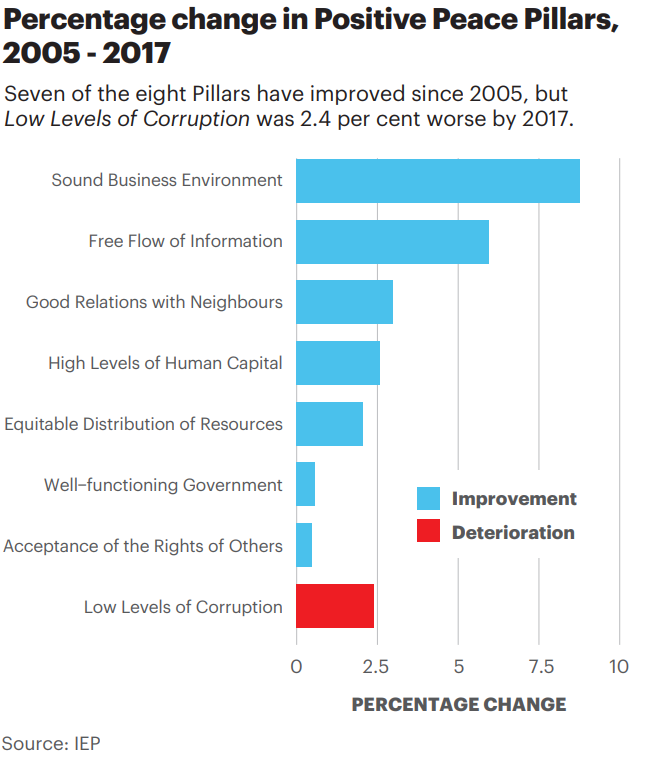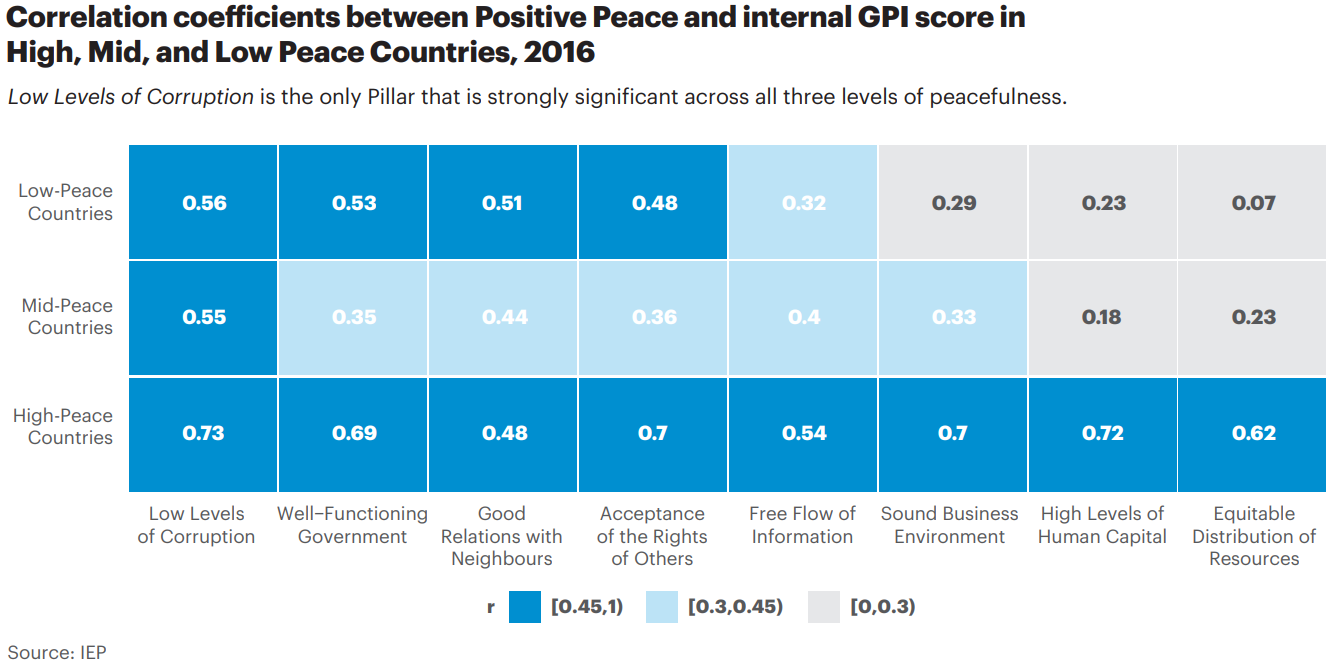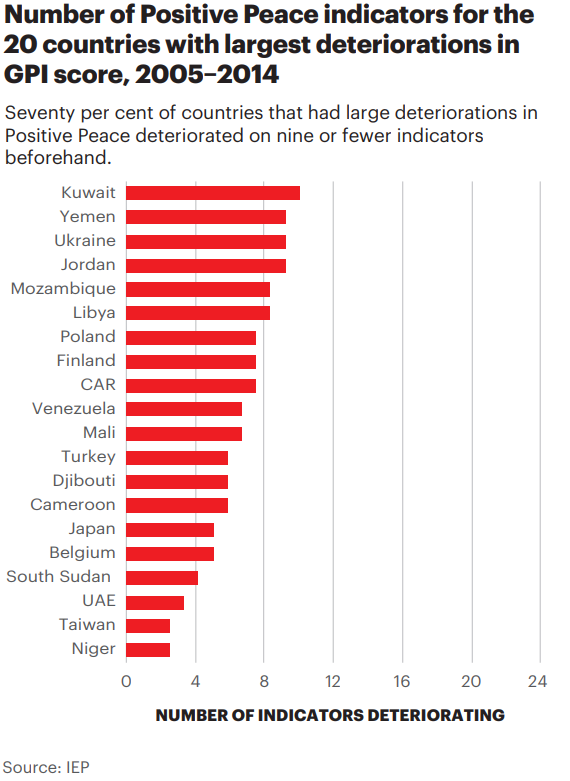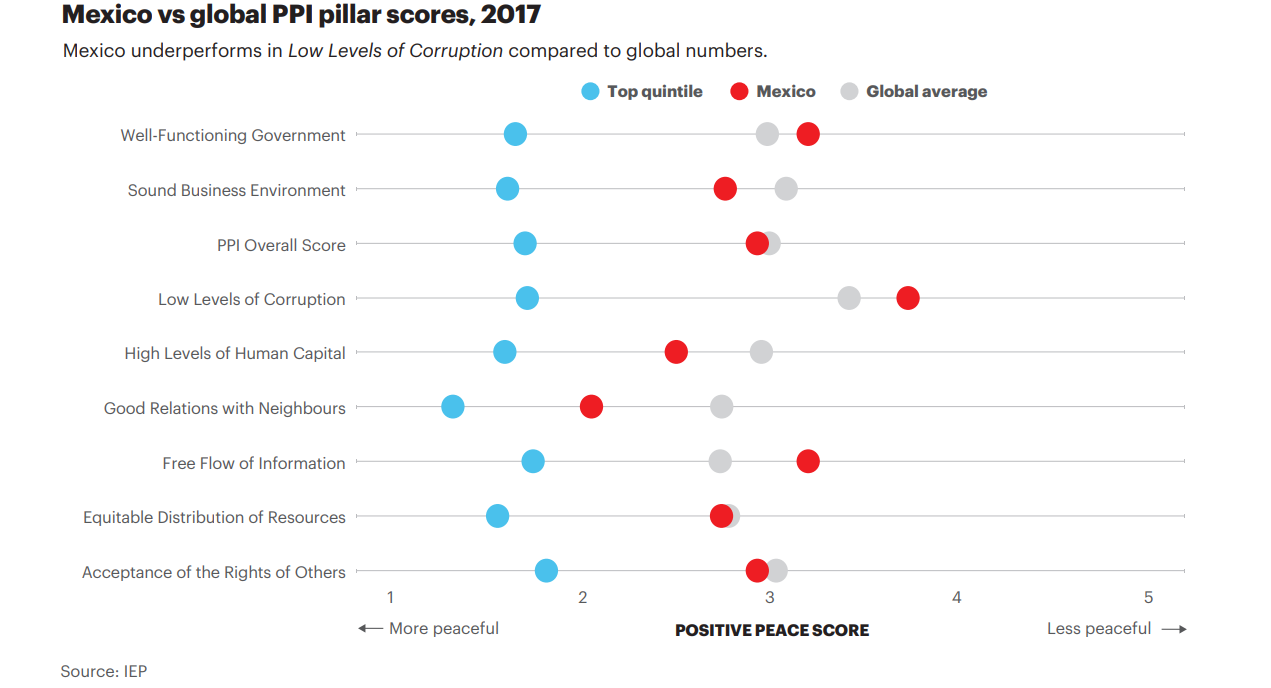In societies with high levels of corruption, inefficient resource allocation often leads to a lack of funding for essential services and civil unrest.
Low Levels of Corruption is one of the eight pillars of Positive Peace. In the context of building peace, this pillar can enhance confidence and trust in institutions.
In societies with high levels of fraud, inefficient resource allocation often leads to a lack of funding for essential services and civil unrest.
From an economic perspective, the 2018 Positive Peace Index found the 50 countries that improved the Low Levels of Corruption pillar between 2005 and 2017 had a 1.95 percentage point higher GDP per capita growth than those where corruption became worse.
Corrupt practices inhibits transparency, increases transaction costs and lowers business efficiency. All are factors that establish hurdles to domestic and foreign investment. Often foreigners seeking to invest in emerging countries face the challenge of dealing with officials demanding bribes.
On a global scale, corrupt practices have increased.
However, overall Positive Peace, including all eight pillars, has improved by 2.4% globally over the last 12 years.
Sound Business Environment and Free Flow of Information pillars have seen consistent improvement.

Low Levels of Corruption is the only pillar that is strongly statistically significant across all levels of peacefulness.
This table shows the correlations for each of the eight pillars of Positive Peace at each level of peace. A correlation coefficient of greater than r=0.45 indicates a strong relationship, while that above r=0.3 indicates a moderate relationship.
It demonstrates that as levels of violence fall, the strength of the Positive Peace correlations increase. Five of the pillars correlate with low peace countries, six with mid-peace countries, and all eight pillars correlate strongly in high peace countries.

Between 2013 and 2016, the Low Levels of Corruption pillar improved in the US, following eight years of being the most underperforming pillar.
However, the latest data published in the Corruption Perceptions Index 2018 by Transparency International shows a decline in the US’ score over the last year.
Taking over as the most underperforming pillar, the Acceptance of the Rights of Others pillar has shown a significant deterioration coinciding with a rise in grievances between different ethnic and social groups, and populist political movements.
The US trend in Positive Peace has now been steadily deteriorating since 2005. However, trends across the pillars have not been steady, with some pillars improving prior to 2013 and then deteriorating afterwards, and vice versa.
A deterioration in the Low Levels of Corruption pillar, amongst others, can indicate that a country will decline in peacefulness.
At the pillar level, deteriorations in Low Levels of Corruption, Acceptance of the Rights of Others, Well-Functioning Government and Free Flow of Information are common leading indicators of future instability.
This chart highlights how many countries deteriorated on key indicators of Positive Peace prior to their deterioration in the GPI.

Mexico scores poorly on the Low Levels of Corruption pillar and is well below the global average.
Scores for Free Flow of Information and Well-Functioning Government are also lagging.
This chart shows an imbalance between pillars in Mexico, with five other pillars outperforming the global averages.
According to IEP research, this disparity between pillars underpins Mexico’s difficulties in addressing its high rates of criminal violence.
Improvements in Sound Business Environment, High Levels of Human Capital and Equitable Distribution of Resources can have negative effects on levels of peace if achieved without improvements in the levels of corrupt practices, governance and Acceptance of the Rights of Others.
